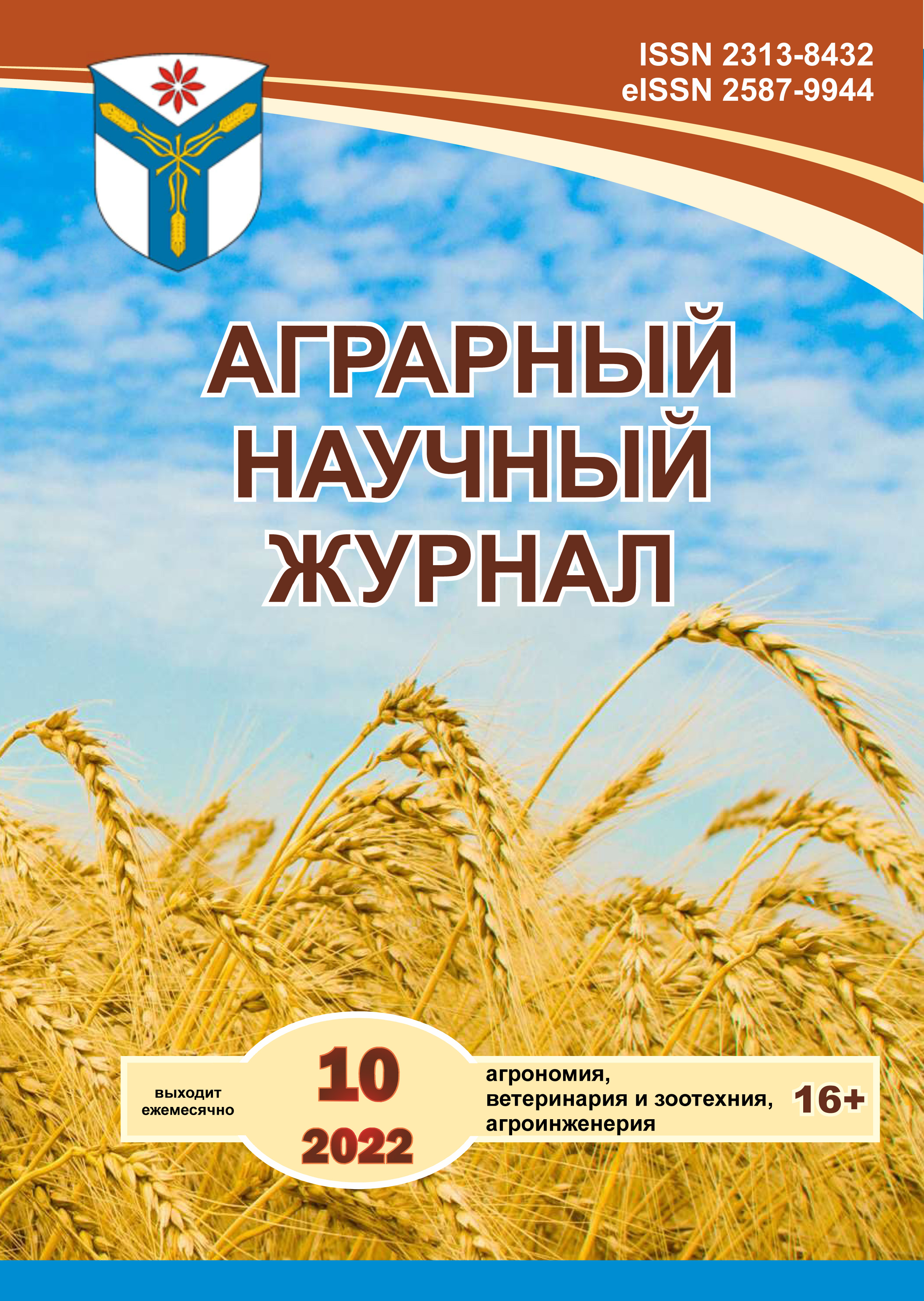Specific features of polymorphism of GH/HaeIII and GDF9/BstHHI genes in Dagestan mountain sheep replacements
DOI:
https://doi.org/10.28983/asj.y2022i10pp89-92Keywords:
polymorphism, sheep, genotype, breed, GH/HaeIII, GDF9/BstHHIAbstract
Polymorphism of the genes associated with the formation of productive traits of animals is studied in order to increase the breeding efficiency. The article presents the results of DNA genotyping and live weight indices of replacements of the Dagestan mountain sheep in the age dynamics. The animals carrying the desirable breeding-relevant allele GHB and having heterozygous genotype GHAB surpassed their peers carrying homozygous genotype GHAA in live weight by 2.9 % at the age of 2 months, by 3.5 % at the age of 4 months, and by 5.4 % at the age of 8 months. The index of live weight of the animals carrying the desirable breeding-relevant allele GDF9A with heterozygous genotype GDF9AG and homozygous genotype GDF9AA was several times higher than the one of their peers carrying homozygous genotype GDF9GG; they differed by 5.0 and 10.1% at the age of 2 months, by 2.0 and 5.7% at the age of 4 months, and by 2.4 and 6.1% at the age of 8 months, respectively. The study revealed complex genotypes with the allelic profile represented by one (GHAAGDF9AG), two (GHAAGDF9AA), and three (GHABGDF9AA) selection-relevant marker alleles. It was noted that greater values of live weight were in the animals carrying complex genotypes GHAAGDF9AA, GHAAGDF9AG and GHABGDF9AA, amounting to 14.8, 14.5, 15.3 kg at the age of 2 months, 26.4, 26.2 and 26.9 kg at the age of 4 months, and 33.6, 33.8 and 34.9 kg at the age of 8 months, respectively, against the peers carrying complex genotype GHAAGDF9GG, amounting to 14.3, 25.8 and 32.8 kg, respectively.
Downloads
References
Ханбабаев В. В., Пахомова Е. В., Сычева И. Н. Мясная продуктивность овец дагестанской горной породы в возрастной динамике // Овцы, козы, шерстяное дело. 2020. № 2. С. 29–31.
Анализ полиморфизма генов CAST, GH и GDF9 у овец дагестанской горной породы / А. М. Абдулмуслимов [и др.] // Зоотехния. 2020. № 11. С. 5–8.
Полиморфизм генов CAST, GH, GDF9 овец дагестанской горной породы / А. А. Оздемиров [и др.] // Юг России: экология, развитие. 2021. Т.16. № 2. С. 39–44.
Полиморфизм генов CAST, GH, GDF9 овец горно-алтайской породы / М. И. Селионова [и др.] // Сибирский вестник сельскохозяйственной науки. 2020. Т. 50. №1. С. 92–00.
Особенности полиморфизма генов GH-HaeIII, CAST-MspI у овец разных пород / А. И. Суров [и др.] // Аграрный научный журнал. 2022. № 7. С. 81–84. DOI 10.28983/asj.y2022i7pp81-84.
Полиморфизм генов GH, СAST у овец в связи с показателями резистентности / Л. Н. Чижова[и др.] // Аграрный научный журнал. 2020. № 12. С. 75–77.
Сердюк Г. Н., Притужалова А. О. ДНК-маркеры в селекции овец // Овцы, козы, шерстяное дело. 2019. №. 2. С. 10–11.
Полиморфизм генов соматотропина (GH), кальпастатина (CAST), дифференциального фактора роста (GDF 9) у овец татарстанской породы / В. П. Лушников [и др.] // Овцы, козы, шерстяное дело. 2020. №o 1. С. 2–3.
Effect of the gene GDF9 on the weight of lambs at birth / L. Getmantseva et al. // Bulgarian Journal of Agricultural Science. 2019. Vol. 25. No. 1. P.153–157.
Selionova M. I., Podkorytov N. A. Polymorphism of the gene GDF9 in sheep of Prikatun type of Altai Mountains breedand its correlation with indices of meat rate productivity // Theory and Practice of Meat Processing. 2021. Vol. 6. No. 1. P. 4–9. DOI: 10.21323/2414-438X-2021-6-1-4-9.
Polymorphism detection of gene GDF9 and its association with litter size in Luzhong mutton sheep (Ovis aries) / F. Wang et al. // Animals. 2021. Vol. 11. No. 2. P. 1–11. Doi: 10.3390/ani11020571.
Downloads
Published
Issue
Section
License
Copyright (c) 2022 The Agrarian Scientific Journal

This work is licensed under a Creative Commons Attribution-NonCommercial-NoDerivatives 4.0 International License.








